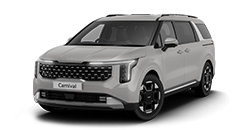open menu
- Home>
- discover kia>
- ASK>
- What is a Rear Cross Traffic Alert?
What is a Rear Cross Traffic Alert?
“Rear Cross-Traffic Collision Warning is a driving assistance system that informs the driver if another vehicle is approaching from either direction when the vehicle is in reverse and is backing out of a parking space.”
What is a Rear Cross-Traffic Collision Warning?
A Rear Cross-Traffic Collision Warning is an advanced driving assistance system that informs the driver if a vehicle is approaching from the left or right when the driver’s vehicle is in reverse and is backing out of a parking space. With this specific system, the alert icon will usually appear on the appropriate side mirror with an audible warning and depending on the model, the alert will also pop up on the dashboard.
How a Rear Cross-Traffic Collision Warning Works
Similar to the Blind-Spot Collision Warning driving assistance system, your vehicle has 2 sensors on the left and right side of the rear bumper that use radar or ultrasonic waves to figure out if any vehicles are approaching from either direction. Usually, both of these systems use the same sensors, however, the only difference would be their cases of use. Just like any of the other advanced driving assistance systems, you should check your owner’s manual to see if the Rear Cross-Traffic Collision Warning is available with your model. If so, it is best to familiarize yourself with the system and how the visual and audio alerts appear.

In this case, once the Rear Cross-Traffic Collision Warning is activated, and the vehicle is in reverse gear it will check to see if a vehicle is near or within reach. If another vehicle is going above 5km/h (approximately 3 mph) the system will notify the driver with a warning icon on the side mirror. Then, an image will appear on the instrument cluster, followed by an audio warning and a vibrating steering wheel to alert the driver.
How To Use the Rear Cross-Traffic Collision Warning
To activate the Rear Cross-Traffic Collision Warning, select ‘User Settings’ from the car’s instrument cluster. Then, select ‘Driver Assistance’ and ‘Rear Cross-Traffic Collision Warning’. Once you click on ‘Rear Cross-Traffic Collision Warning’ the system is on and ready to be used.
Also, similar to the Blind-Spot Collision Warning and the Blind-Spot Collision Avoidance Assist, a new type of technology has been established and is meant to work side-by-side with the Rear Cross-Traffic Collision Warning. This system is called the “Rear Cross-Traffic Collision Avoidance Assist” (RCCA). Its radar can detect oncoming vehicles from a range of 25m from the left and right side, and 6m from its rear. Identical to the Blind-Spot Collision Avoidance Assist, if the driver continues to put the vehicle in reverse while both the illuminated visual and audio warnings are on, the Rear Cross-Traffic Collision Avoidance Assist system will apply the brakes to avoid a potential collision. Please note that the Rear Cross-Traffic Collision Avoidance Assist must also be activated before use.

Usage Precautions
- As with any advanced driving assistance system, when using Rear Cross-Traffic Collision Warning and Rear Cross-Traffic Collision Avoidance Assist, always remember that safe driver-assisted technology is never a replacement nor a substitute for safe driving practices.
- Prior to activating the Rear Cross-Traffic Collision Warning or any of the other advanced driving assistance systems, check your owner’s manual for vital information such as how to operate the system, what kind of warnings or alerts will appear, etc.
- Before getting into your vehicle, you should check to ensure the sensors are not covered by dirt or snow. Also, be aware that the system might have trouble operating under heavy rainfall or snowy conditions.
- Bear in mind this driving assistance system was created to help reverse out of straight, T-zone parking spaces. Therefore, if you are parked in an angled parking space, the system might not work as well as it should.
- Lastly, keep in mind, this safety system is programmed to identify other vehicles traveling at a certain speed and is not optimized to detect motorcycles, mopeds, bicycles, scooters, and pedestrians.





